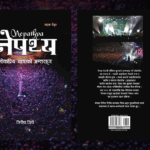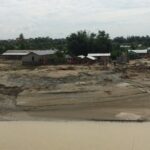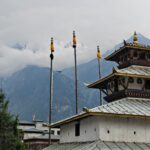Ten years have passed since the devastating earthquake of April 2015 – a tragedy that reshaped Nepal physically, socially, and psychologically. In its aftermath, the urgency of disaster resilience became an undeniable priority, compelling changes in policies, construction practices, and public awareness. As an architect and urban planner, I have witnessed both the strides we have made and the critical gaps that remain in our pursuit of a safer and more resilient Nepal.
Progress in Building Resilience
One of the most significant positive outcomes has been the strengthening of building codes. The revised structural requirements now mandate larger structural elements, improved span limitations, expansion joints, tie beams, and sill and lintel level beams. Municipalities have also implemented stricter monitoring processes, issuing building completion certificates only after thorough inspections at each phase of construction. These regulations, continuously upgraded over the years, have undoubtedly made buildings safer.
Another noteworthy advancement is the promotion of earthquake-resistant construction using locally available materials. The government’s guidebook on earthquake-resilient building techniques, featuring stone, wood, and bamboo, has encouraged architects and builders to incorporate traditional methods alongside modern safety standards. International collaborations have further strengthened technical expertise, with developed nations investing in skill-building programs for engineers, developers, and policymakers in Nepal’s public, private, and non-profit sectors.
The Neglected Priority: Open Public Spaces
Despite these advancements, Kathmandu Valley, one of the most densely populated and earthquake-prone regions, continues to lack accessible open spaces, something crucial for emergency response and evacuation. Many spaces have been encroached upon, leased out for private purposes, or restricted from public use. The failure to prioritize open spaces in urban planning exposes our cities to greater risks, making earthquake resilience an incomplete effort.
The Loss of Indigenous Architectural Identity
Nepal’s post-earthquake reconstruction ushered in an overwhelming use of reinforced concrete. While safety, affordability, and comfort took precedence, this shift disregarded Nepal’s indigenous architecture, which had long supported sustainability, local livelihoods, and cultural preservation. The rapid replacement of traditional materials — stone-clad walls, carved wooden pillars, and sloped slate roofs — with exposed concrete and bare brick has drastically altered the landscape. Rural villages, once adorned with red mud houses and thatched roofs, now mirror urban skylines of monotonous, flat-roofed structures.
This transformation has been exacerbated by a lack of awareness about safe construction using local techniques. Indigenous methods, which had evolved over centuries to withstand seismic forces, were not given the opportunity they deserved in Nepal’s reconstruction process. As a country that thrives on tourism, our architectural heritage should have been protected as an asset, yet it has been largely overlooked.
Challenges in Innovation and Sustainable Construction
As architects, we constantly face regulatory roadblocks when exploring alternative and sustainable materials. Nepal’s building codes, though rigorous in some respects, remain rigid when it comes to innovation. Materials such as metal, rammed earth, and bamboo, which have proven structural and environmental benefits, are still not seamlessly integrated into the country’s building bylaws. The lack of flexibility in these codes discourages the pursuit of alternative, climate-friendly construction solutions that could enhance both safety and sustainability.
Our Commitment and the Road Ahead
In our practice at Gaatha, we rigorously adhere to building codes and advocate for higher safety standards. However, we go beyond compliance, working closely with clients to ensure not just structurally sound buildings but also secure surrounding walls and infrastructure. We also explore and implement locally sourced, durable materials that benefit both the climate and community. Additionally, through volunteer efforts, my team and I have spent months designing, constructing, and supervising the development of parks in Lalitpur — efforts aimed at creating much-needed open spaces in urban areas.
But our efforts alone are not enough. Nepal’s approach to earthquake resilience still lacks the urgency it demands. Unlike Japan, which has systematically integrated lightweight materials and disaster preparedness into its urban planning, Nepal has, in many ways, forgotten the devastation too soon. Private structures continue to be built with minimal earthquake-resistant considerations, and urban planning has yet to fully embrace resilience as a fundamental principle.
The Way Forward
As we reflect on the past decade, we must recognize that disaster resilience is not a one-time effort. It is a continuous commitment. Strengthening regulations is crucial, but so is ensuring their implementation. Expanding research into earthquake-resistant infrastructure suited to Nepal’s unique geography and resources is imperative. Policies should incentivize the use of indigenous construction techniques, and alternative materials must be seamlessly integrated into building codes to promote sustainable resilience.
Equally important is the need for public awareness. Communities must be educated on safe construction practices, and policymakers must champion open spaces as vital urban assets. Earthquake preparedness must become a permanent priority, not just a reaction to past tragedies.
As an architect and urban planner, I remain committed to pushing for a Nepal that balances safety with sustainability, tradition with innovation, and development with disaster resilience. The lessons of 2015 should not be forgotten. They must shape our future.
Shrinkhala Khatiwada is a Nepali architect, development practitioner, and former Miss Nepal World 2018. With a background in architecture from the Institute of Engineering, Pulchowk Campus and a Master’s in Urban Planning from Harvard University, she brings a deep commitment to sustainable development and community empowerment. Shrinkhala serves as the Director of Gaatha, a renowned Kathmandu-based architecture firm redefining spatial designs. She is also a vocal advocate for education and public health.





